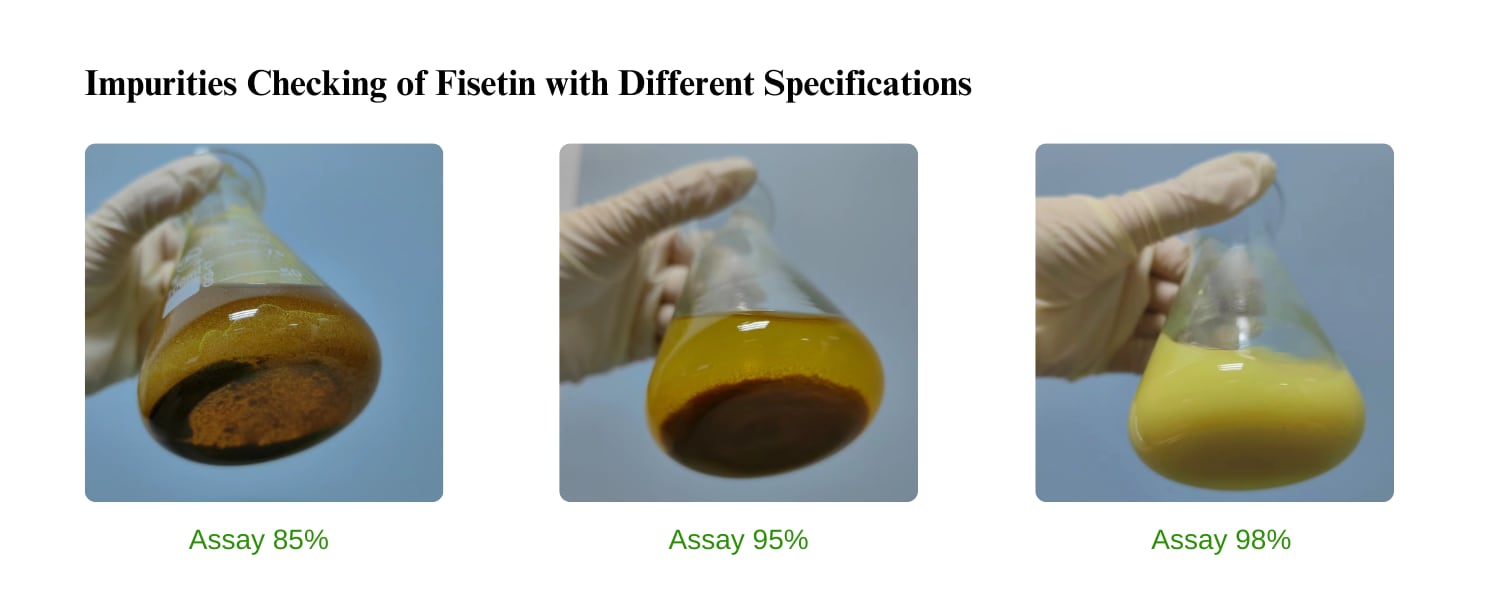Anti-aging is one of the hottest topics in nearly all the ingredients expos, and Supplyside West (SSW) 2023 witnessed a rising focus on fisetin, the research-backed senolytic that removes senescent cells, one of the hallmarks of aging.
This could be down to the move away from nicotinamide mononucleotide (NMN) which faces uncertain legal status in the US, or the rapid development of senolytics, a current focus for scientists and the anti-aging industry.
Deregulated nutrient sensing and cellular senescence are two hallmarks of aging reported in 2023.1 While nicotinamide adenine dinucleotide (NAD+) – and its precursors like NMN – can activate sirtuins to upregulate nutrient sensing, senolytics directly target senescent cells.
Aging can be at the levels of cell, tissue, organ, system and organism, but the cell is the smallest unit of life because it is the most fundamental building block of every living organism.2
Senescent cells accumulate with age but NAD+ declines with age. CD38, also known as cyclic ADP ribose hydrolase, is the major culprit in NAD+ decline, but why does it decrease in the first place? The answer is because senescent cells secrete CD38 as part of the pro-inflammatory cytokine cocktail known as the senescence-associated secretory phenotype (SASP).3
Further studies have confirmed that pro-inflammatory M1-like macrophages accumulate in metabolic tissues during aging and trigger acute responses to inflammation. These M1-like macrophages express high levels of the NAD-consuming enzyme CD38 and have enhanced CD38-dependent NADase activity, thereby reducing tissue NAD levels.
Scientists have found that senescent cells progressively accumulate during aging and SASP induces macrophages to proliferate and express CD38.4
It is not surprising that senolytics are also good for those who take NMN to supplement NAD+.
A senolytics superstar
Fisetin is the superstar in senolytics. Driven by advanced scientific research and rapidly growing market demand, increasingly more brands are preparing to launch new products containing fisetin. Over recent months, many brands have visited Bonerge Lifescience and have shown an interest in this future star anti-aging ingredient at SSW 2023.
While there are numerous reports on the functions of fisetin, some brands have expressed concern about the quality as finding quality reports can prove challenging. Brands and consumers are often confused by terms like purity and assay. What they really care about is how they can confidently choose safe and efficacious ingredients from a chaotic market.
Quality is not only an ingredient’s physical and chemical criteria but is also an indicator of biological benefits. The content of active pharmaceutical ingredients (API) is the basis for the intended use of a drug and pharmacopeial standards like United States Pharmacopeia (USP) and European Pharmacopoeia (EP) which clearly state content requirements for each API.
Pharacopeial tests determine the content of an API besides assessing its purity. Similarly, the content of a dietary ingredient reassures the functions of a product and is the substance basis for on-pack claims. If purity were used instead of assay, the content might not be enough.
For example, some fisetin on the market touting 98% purity is determined to be less than 85% by assay. However, dosage matters. The real content other than the purity of fisetin is important. Fisetin without an assay test puts brands and customers at risk of underdosage, thus its efficacy cannot be guaranteed.
Impurities like heavy metals, microorganisms, and unknown impurities, can potentially be harmful. Different botanical sources, different processes and different manufacturing facilities, or even the storage and transportation conditions, will bring different impurities to the products. Low content fisetin consists of a large number of unknown impurities but it is difficult to predict the impact of an unknown impurity.

Simply put, the content of the active ingredients is related to the efficacy, and impurities in the product are related to potential harm. Higher content and fewer impurities make ideal ingredients.
An indicator for safety and efficacy
Bonerge created BeFisetin™ Ultra99 after iterative process innovation. Ultra99 contains fisetin at 98% and flavones at 99%, including fisetin. These levels make it not only a notable physical and chemical standard available on the market but also serve as important indicators for safety and efficacy.
Fisetin has the potential to be applied in dietary, pharmaceutical, and cosmeceutical industries. BeFisetin™ Ultra99 would meet the requirements of all these industries. At the same time, Bonerge is making efforts to manufacture fisetin in an eco-friendly and cost-efficient way to make BeFisetin™ Ultra99 more affordable to consumers.
Historically fisetin has been extracted from the trunk of smoketree. However, the smoketree grows slowly and it takes several, even hundreds, of years before the trees can be harvested and used. Thus, each tree can only be used once.
Bonerge carefully determined the content of fisetin in other parts of the smoketree, with branches and leaves gradually being used instead of trunk. Today Bonerge uses only leaves to produce fisetin on a large scale.
Quality standards, including physical, chemical, and microbiological tests and criteria are important parts of the safety and efficacy of ingredients. However, unless the relations between these test indicators, are declared, quality standards alone cannot be used to replace direct safety and efficacy tests.
Bonerge is applying for Generally Recognized As Safe (GRAS) status for BeFisetin™ Ultra99, for which the Food and Drug Administration (FDA) requires a series of toxicological tests to assess its safety.
Smoketree
Smoketree, aka Cotinus coggygria, syn. Rhus cotinus, has a long history of use in Europe and Asia. BeFisetin™ is extracted from smoketree while others extract fisetin from the Japanese wax tree, Rhus succedanea. Although Rhus succedanea has historically been used, safety assessments on extracting fisetin from it still needs to be done. Why? Conventional production and dosage are not always followed.
Purification of fisetin from Rhus succedanea is not conventional. One gram of Rhus succedanea contains just a few milligrams of fisetin, which does not align to current dosage requirements. Whether the fisetin is extracted from Cotinus coggygria or Rhus succedanea, dosages larger than conventional use should be confirmed by modern toxicological tests for safety.
By conducting toxicological tests and receiving GRAS approval, Bonerge will engender consumer confidence on the safety of fisetin itself rather than focusing solely on the plant source.Clinical trials, especially randomized controlled trials (RCT), are the gold standard for demonstrating thesafety and efficacy of a new treatment. Bonerge will utilize RCTs to confirm the safety and efficacy of BeFisetin™.
The devoted mission of BeFisetinTM
By committing to its quality, safety, and efficacy, Bonerge hopes more people will benefit from BeFisetin™ as a quality fisetin ingredient. To further the development of the fisetin industry and fulfill its social responsibility, Bonerge recently launched a project encouraging scientists and formulators worldwide to conduct more research on fisetin for non-commercial use.
Scientists interested in this project are invited to apply for a fisetin sample to study, with financial support available for some studies. “We applied BeFisetin™ to make our fisetin stand out from generic and inferior fisetin ingredients. We hope brands can find top quality fisetin ingredients and consumers can find efficacious and affordable fisetin products more easily,” says Allen Ge, President of Bonerge.
“Many brands and consumers are confused by analytical terms but it’s Bonerge’s responsibility to supply a high quality fisetin ingredient and save them the time and work of navigating through inferior fisetin options. It’s Bonerge’s mission to serve the market with fisetin that does not need extensive quality validations by brands and consumers.”
References
1. López-Otín, C.; Blasco, M. A.; Partridge, L.; et al. (2023). Hallmarks of aging: An expanding universe. Cell, 186(2), 243–278.
2. Cai, Y.; Song, W.; Li, J.; et al. (2022). The landscape of aging. Science China. Life sciences, 65(12), 2354–2454.
3. Lifespan.io. Why NAD+ Declines With Age.
4. Covarrubias, A. J.; Kale, A.; Perrone, R.; et al. (2020). Senescent cells promote tissue NAD+ decline during ageing via the activation of CD38+ macrophages. Nature metabolism, 2(11), 1265–1283.





